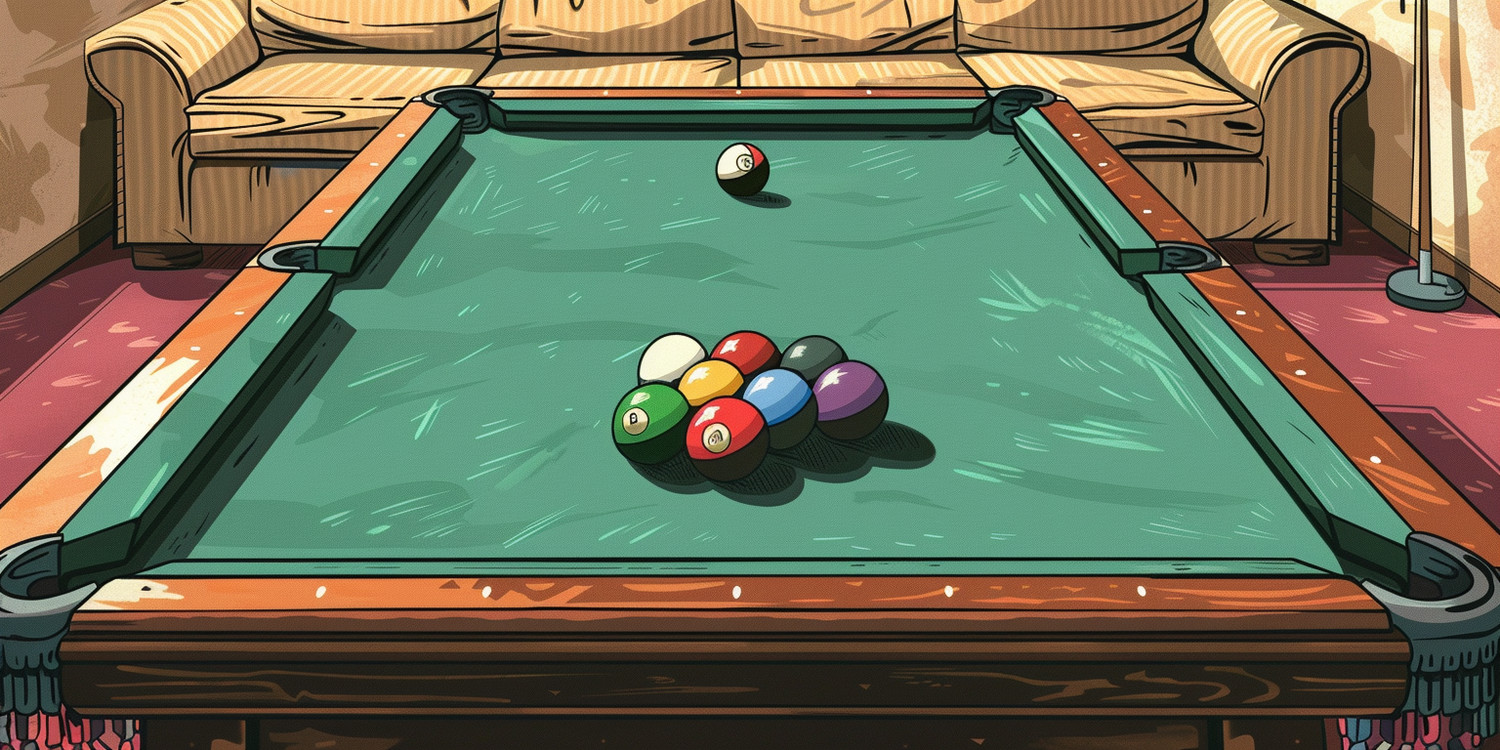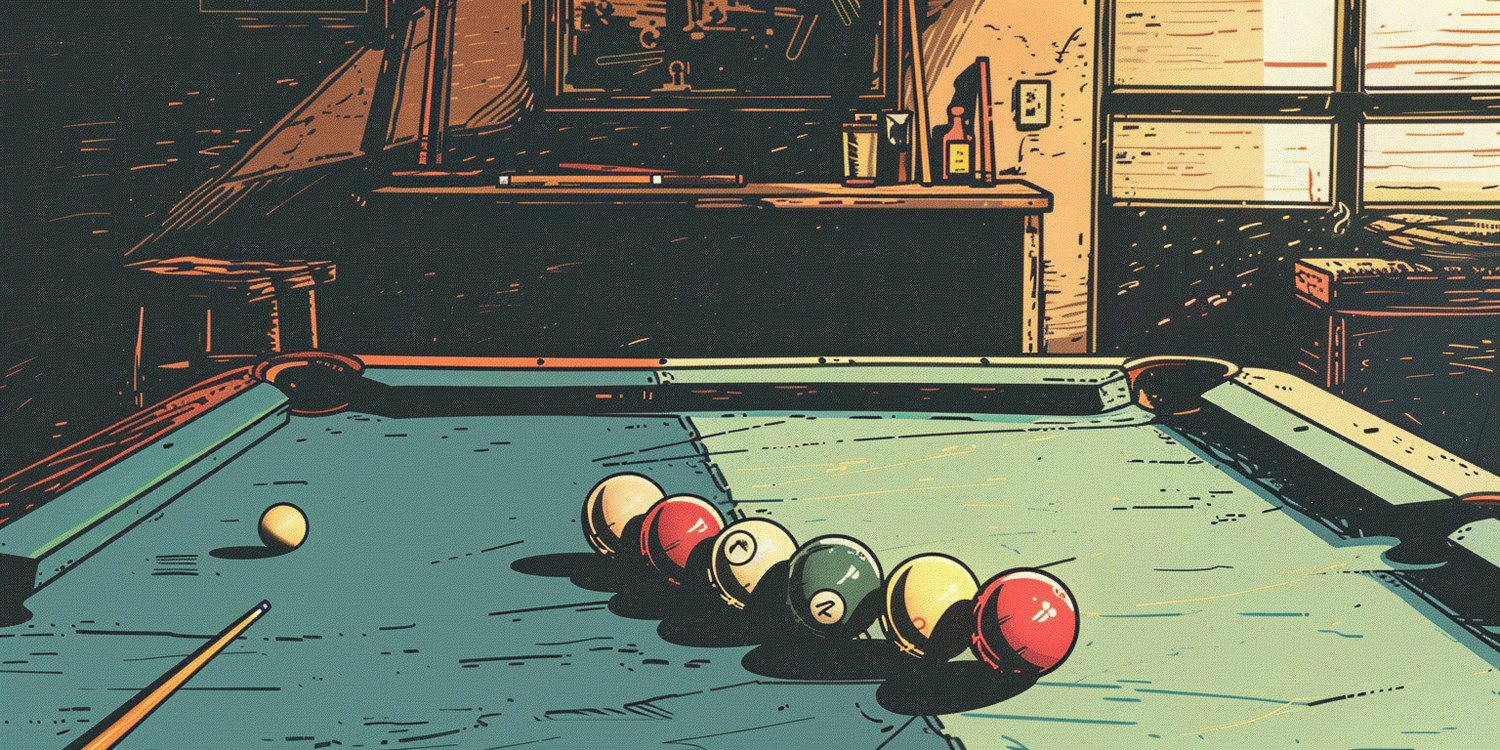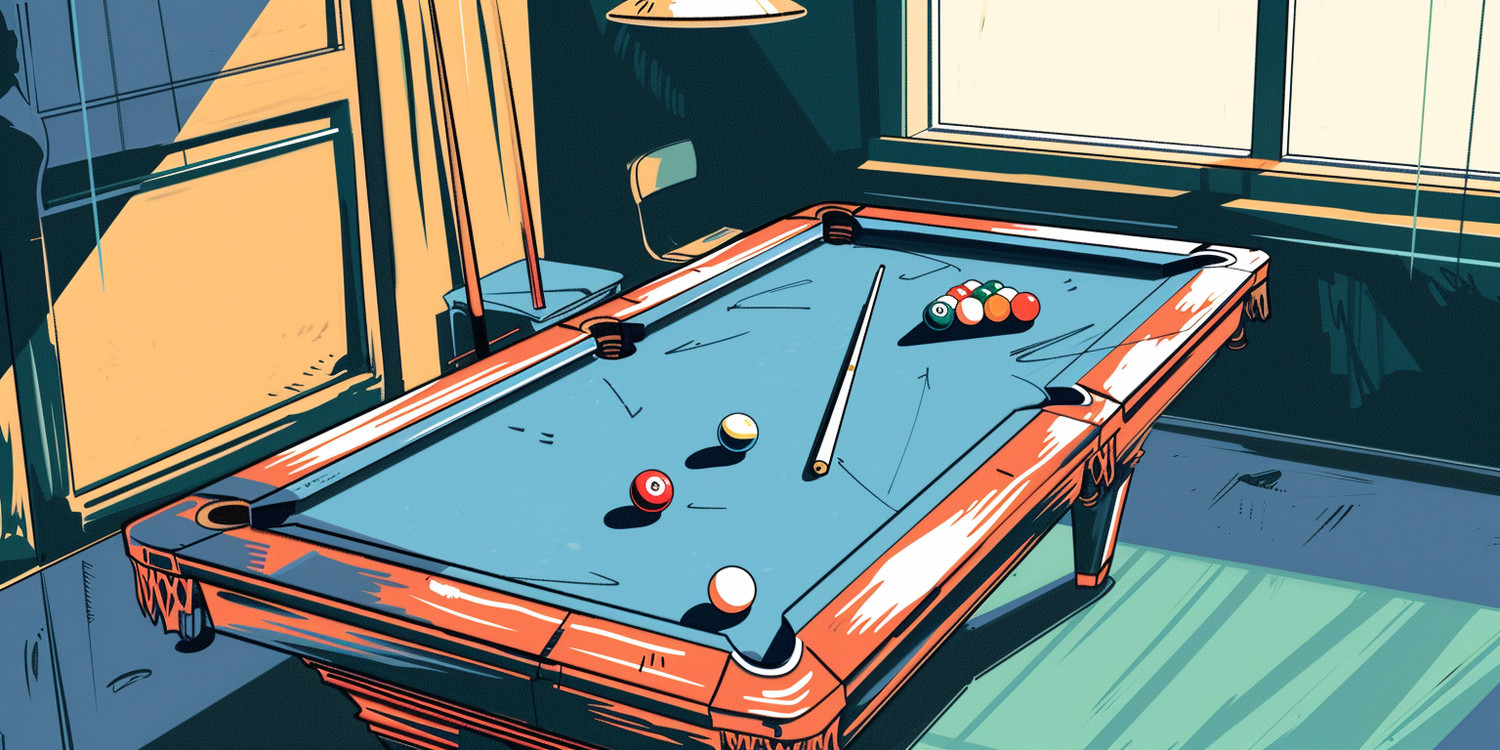
Pool transcends mere ball-pocketing; it embodies a sophisticated interplay of physics and foresight. Mastering strategic elements elevates one’s game beyond basic shot-making, demanding astute planning and tactical adaptability.
Defining Strategic Play in Pool
Strategic play in pool extends far beyond simply aiming and shooting; it involves a comprehensive assessment of the table, anticipation of future ball positions, and exploitation of an opponent’s weaknesses. A strategic player meticulously plans a sequence of shots, considering not only the immediate pocketing of a ball but also the resulting position of the cue ball and other object balls. This requires a deep understanding of angles, speeds, and spin, allowing for precise cue ball control and the ability to manipulate the table to one’s advantage. Effective strategic play also includes defensive tactics, such as safety shots, designed to leave the opponent with a difficult or impossible shot. Furthermore, a strategic mindset necessitates adaptability, as the table layout can change dramatically with each shot. Recognizing and capitalizing on opportunities, while simultaneously minimizing potential risks, is the hallmark of a truly strategic pool player. The ability to anticipate an opponent’s moves and counteract them with well-planned shots is paramount. Ultimately, strategic play transforms pool from a game of chance into a calculated contest of skill and intellect, where foresight and precision dictate the outcome.
Fundamental Techniques for Shot Execution
Executing shots with precision requires mastering fundamental techniques. These include stance, alignment, and cue ball control, forming the bedrock of consistent and accurate performance on the pool table.
Stance and Alignment for Accuracy
Achieving consistent accuracy in pool necessitates a meticulously crafted stance and precise alignment. The stance should provide a stable and balanced foundation, allowing for a smooth and controlled stroke. Typically, this involves positioning the feet shoulder-width apart, with the dominant foot slightly forward, creating a comfortable and natural posture. The body should be aligned directly towards the target line, ensuring that the eyes, cue, and intended path of the cue ball are all in the same plane. Proper alignment begins with visualizing the line from the cue ball to the contact point on the object ball, and then positioning the body to facilitate a stroke along that line. The head should be directly over the cue, with the eyes focused intently on the object ball. Maintaining a consistent head position throughout the stroke is crucial for accuracy. Furthermore, pre-shot routines, including practice strokes, help to reinforce proper alignment and build muscle memory. Paying meticulous attention to these fundamental elements of stance and alignment will significantly enhance a player’s ability to consistently execute accurate shots. Any deviation from proper alignment can introduce unwanted angles and lead to missed shots. Therefore, dedicating time to perfecting these basics is essential for developing a reliable and repeatable stroke.
Cue Ball Control: Speed and Spin Mastery
Cue ball control is the cornerstone of advanced pool play, enabling players to dictate the position of the cue ball after each shot and set up future opportunities. Mastery of cue ball control hinges on two key elements: precise speed control and skillful application of spin. Speed control dictates the distance the cue ball travels and its reaction upon impact with object balls and cushions. A softer stroke provides greater control over short distances, while a firmer stroke is necessary for longer shots and breaking. Understanding how different speeds affect the cue ball’s trajectory and post-impact behavior is crucial for strategic positioning. Spin, imparted by striking the cue ball off-center, adds another layer of control. Topspin (follow) causes the cue ball to roll forward after impact, increasing its forward momentum. Backspin (draw) causes the cue ball to spin backward upon impact, allowing it to reverse its direction. Sidespin (English) causes the cue ball to deflect at an angle after impact, useful for navigating around obstacles or altering the angle of the next shot. Mastering the art of combining speed and spin allows players to precisely control the cue ball’s path and position, opening up a wide range of strategic possibilities. Practice drills focusing on specific cue ball reactions are essential for developing this skill. Ultimately, the ability to manipulate the cue ball with precision separates casual players from true masters of the game.
Advanced Shot Techniques

Beyond basic shot-making lies a realm of advanced techniques that unlock greater control and strategic options. Mastering draw and follow shots expands a player’s repertoire and enhances cue ball manipulation.
The Draw Shot: Principles and Application
The draw shot is an essential advanced technique that allows a player to impart backspin on the cue ball, causing it to reverse direction after striking the object ball. The fundamental principle behind the draw shot is to strike the cue ball below its center, creating backward rotation. The amount of backspin, and therefore the degree of draw, is determined by the distance below center that the cue stick makes contact. Several factors influence the effectiveness of a draw shot, including the player’s stance, grip, and stroke. A stable stance is crucial for maintaining accuracy, while a relaxed grip allows for a smooth and controlled stroke. The stroke itself should be linear and follow-through, ensuring that the cue stick continues along the intended path after striking the cue ball. Application of the draw shot is versatile, allowing players to maneuver the cue ball into favorable positions for subsequent shots, avoid obstacles, or control the speed and angle of the cue ball’s return. Practicing draw shots with varying degrees of backspin is essential for developing mastery. Understanding the relationship between the point of contact on the cue ball and the resulting backspin is key to executing draw shots with precision. Furthermore, it’s crucial to ensure the cue tip is well-chalked to prevent miscues and maintain consistent contact.
The Follow Shot: Principles and Application
The follow shot, also known as topspin, is another fundamental advanced technique that allows a player to impart forward rotation on the cue ball, causing it to roll forward after striking the object ball. The principle behind the follow shot is to strike the cue ball above its center, creating forward rotation. The amount of topspin, and thus the degree of follow, is determined by the distance above center that the cue stick makes contact. Like the draw shot, the effectiveness of a follow shot is influenced by stance, grip, and stroke. A stable stance and relaxed grip are crucial for maintaining accuracy and control. The stroke should be smooth and deliberate, with a complete follow-through, ensuring that the cue stick continues along the intended path after striking the cue ball. Follow shots are highly versatile, enabling players to maintain cue ball position for the next shot, break clusters of balls, or increase the distance the cue ball travels after impact. Practicing follow shots with varying degrees of topspin is essential for developing proficiency. Understanding the relationship between the point of contact on the cue ball and the resulting forward rotation is key to executing follow shots with precision. By mastering the follow shot, players can enhance their control over the cue ball and unlock a wider range of strategic options on the table.
Strategic Shot Selection and Planning
Effective shot selection and planning are crucial for outmaneuvering opponents. This involves identifying weaknesses and anticipating future moves to gain a strategic advantage on the pool table.
Identifying and Exploiting Opponent Weaknesses
A critical aspect of strategic pool play is the ability to identify and exploit an opponent’s weaknesses. This requires keen observation and a deep understanding of the game. Weaknesses can manifest in various forms, including inconsistent shot-making, poor cue ball control, a lack of knowledge of advanced techniques, or a tendency to make poor strategic decisions under pressure. Observing an opponent’s shot selection, stance, and stroke can reveal tendencies that can be exploited. For example, if an opponent consistently struggles with long shots, a strategic player might choose to play safety shots that leave them with difficult long shots. If an opponent has poor cue ball control, a player might aim to leave them with awkward angles or long distances to travel. Recognizing an opponent’s mental game weaknesses is equally important. Some players struggle to maintain composure under pressure, making them more prone to errors. By applying subtle pressure, such as playing at a faster pace or engaging in light conversation, a strategic player can exploit these mental vulnerabilities. Ultimately, the ability to identify and exploit opponent weaknesses transforms pool from a purely physical game into a battle of wits and psychological strategy. Careful observation and astute analysis can provide a significant advantage, leading to more victories.
Planning Shots with Future Moves in Mind
Strategic pool play necessitates thinking several shots ahead, planning each shot not only for immediate pocketing but also for setting up future opportunities. This involves anticipating the resulting position of the cue ball and other object balls, considering angles, distances, and potential obstacles. Effective planning requires a deep understanding of cue ball control, allowing players to manipulate the cue ball’s path and position with precision. When planning a shot, a strategic player considers the optimal position for the next shot, taking into account factors such as the angle of approach, the distance to the next ball, and the presence of any interfering balls. This often involves using techniques such as follow, draw, or sidespin to control the cue ball’s trajectory. Furthermore, a strategic player anticipates potential problems and plans accordingly. If a cluster of balls blocks the path to a desired pocket, the player might plan a shot that breaks the cluster while simultaneously positioning the cue ball for the next shot. Effective planning also involves considering defensive options. If a clear shot is not available, the player might choose to play a safety shot, leaving the opponent with a difficult or impossible shot. Ultimately, planning shots with future moves in mind transforms pool from a reactive game into a proactive one, where foresight and strategy dictate the outcome.
Defensive Strategies: Safety Play

Defensive strategies, particularly safety play, are integral to a well-rounded pool game. Effective safety shots can disrupt an opponent’s rhythm and create opportunities for strategic advantage.
Executing Effective Safety Shots
Executing effective safety shots is a crucial skill in strategic pool play, designed to leave the opponent with a difficult or impossible shot while minimizing the risk of providing them with an easy opportunity. A well-executed safety shot forces the opponent to play defensively, disrupting their rhythm and potentially leading to errors. Several factors contribute to the effectiveness of a safety shot, including precise cue ball control, a deep understanding of angles, and the ability to anticipate the opponent’s potential responses. The primary goal of a safety shot is to leave the opponent snookered, meaning that the cue ball cannot directly contact any of their object balls. This can be achieved by positioning the cue ball behind another ball or by placing the object balls in a location that is difficult to reach. Another common safety tactic is to scatter the object balls, making it difficult for the opponent to string together a series of shots. When executing a safety shot, it is crucial to minimize the risk of accidentally leaving the opponent with an easy shot. This requires careful consideration of the angles and distances involved, as well as the potential for the cue ball to rebound off the cushions. Practicing safety shots is essential for developing proficiency in this important aspect of the game. By mastering the art of the safety shot, players can significantly improve their chances of winning, even when they do not have a clear shot available.

